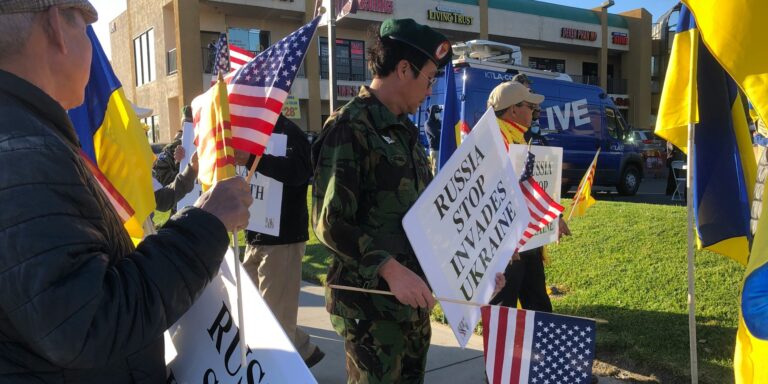On June 6, 2025, veterans and their supporters across the United States gathered to protest the Trump administration’s recent cuts to the Department of Veterans Affairs (VA), marking the anniversary of D-Day with a powerful display of solidarity. The demonstrations, organized by veterans’ groups, took place at the National Mall in Washington, D.C., as well as at 16 state capitol buildings and over 100 other locations across 43 states. The protests underscored the frustrations of veterans, their families, and advocates over what they see as ongoing neglect and underfunding of essential services for those who have served in the military.
The timing of the protests was significant, falling on the anniversary of D-Day, one of the most pivotal moments in World War II. June 6, 1944, marked the Allied invasion of Normandy, a mission that cost thousands of American lives and ultimately contributed to the defeat of Nazi Germany. For many veterans, D-Day remains a powerful symbol of sacrifice, making it an apt backdrop for a national movement aimed at improving conditions for veterans today.
The protests centered around widespread cuts to veterans’ healthcare, as well as the reduction of staff and critical support programs within the VA. These cuts have caused significant concern, particularly among veterans who rely on the VA for medical care, mental health support, and benefits assistance. Protesters voiced anger over long wait times for healthcare services, the erosion of programs designed to assist veterans transitioning back to civilian life, and the overall decline in the quality of services at VA facilities across the country.
One of the key grievances raised by protest organizers was the reduction in mental health services, which many veterans argue is critical in addressing the growing issue of PTSD (Post-Traumatic Stress Disorder) among former military personnel. Advocates warned that cuts to mental health programs could exacerbate the already high rates of suicide among veterans. Veterans’ organizations have long called for increased funding for these services to ensure that those who have served are given the support they need to heal and reintegrate into society.
In addition to healthcare concerns, protesters expressed frustration over the broader impact of government-wide budget cuts. Many veterans fear that a reduction in federal spending will lead to further deterioration in programs that are vital for their well-being, including housing assistance and educational benefits. The cuts also threaten job placement programs, which assist veterans in securing meaningful employment after their service. With the economy evolving rapidly, many veterans struggle to adjust to civilian work environments, making these programs especially important.
The protests were not only a demand for better services, but also a call for policymakers to honor the commitments made to veterans when they enlisted. Demonstrators emphasized that the government’s failure to adequately fund veterans’ programs undermines the sacrifices made by military personnel, many of whom put their lives on the line for their country. Organizers highlighted that veterans who served in past wars, including those who fought on D-Day, deserve the highest level of care and respect, both during and after their service.
The protests brought together veterans from all walks of life—those who served in World War II, the Vietnam War, the Gulf War, and more recent conflicts in Iraq and Afghanistan. Their shared message was clear: veterans should not have to fight for the care and support they were promised. The rallies served as a reminder that the nation’s duty to its military veterans does not end with their service, but should continue as they transition back into civilian life.
While the protests were largely peaceful, they drew significant attention from lawmakers and the media, with some politicians expressing support for the veterans’ cause. Several elected officials have already pledged to advocate for increased funding for the VA and to restore cuts to critical programs. However, the political climate remains contentious, and the outcome of these protests may depend on the continued advocacy of veterans’ organizations and their ability to mobilize voters.
The demonstrations on June 6, 2025, were a bold reminder that the needs of veterans should not be overlooked, especially on a day that commemorates their sacrifice. As these protests continue to unfold across the country, the hope among veterans and their supporters is that their voices will be heard, and that policymakers will take action to ensure the well-being of those who have served in the armed forces.


